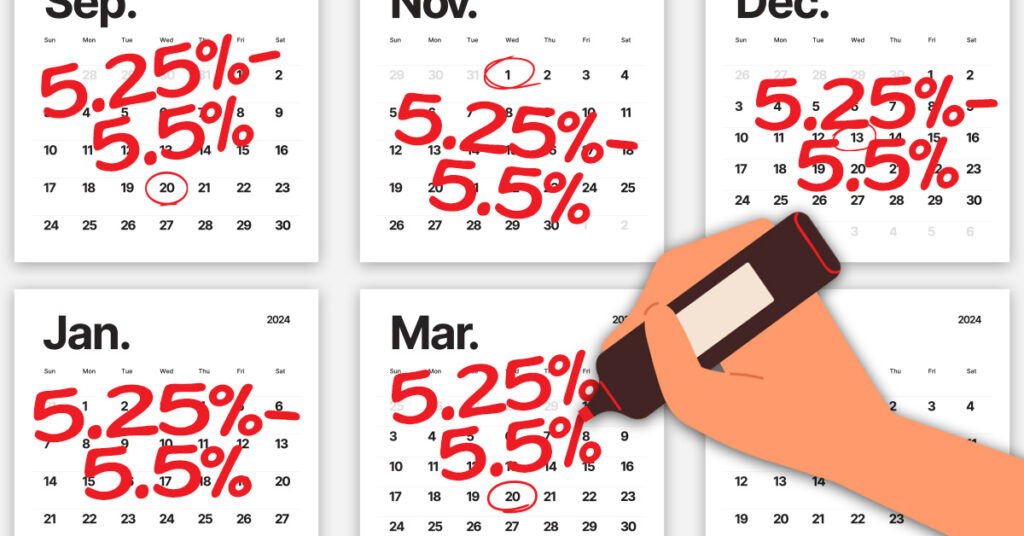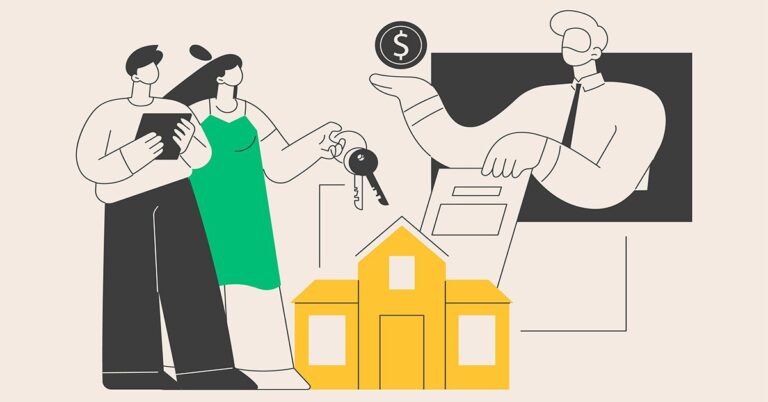March’s meeting of the Federal Open Market Committee (FOMC) came and went largely as expected on Wednesday, with the policy-setting body of the Federal Reserve again keeping its anchor rate unchanged at 5.25% to 5.5%.
It’s the fifth consecutive meeting that the central bank has held the benchmark rate steady at its highest level since 2001, in keeping with its well-documented “higher for longer” proclamation. Most Fed watchers aren’t expecting a rate cut until spring (Moody’s has the first decrease pegged for May, while Fannie Mae anticipates the initial reduction in June), and hotter-than-expected inflation data from the past couple of months bolstered the case for holding off on a rate-lowering cycle.
The post-meeting statement issued by the FOMC reflected the ongoing holding pattern in interest rates, with a minimal change about the continued strength of the job market. Much more notable was the Summary of Economic Projections released after the FOMC meeting, which revealed that a significant majority within the committee remains steadfast about policy easing later on in the year.
Specifically, Fed officials still expect three rate cuts in 2024, slashing three-quarters of a percentage point from the anchor rate by the end of the year. That’s consistent with the previous summary released by central bank officials after the December FOMC meeting. But while the median projection for the year-end rate was unchanged at roughly 4.63%, the mean rose to 4.74%. And two committee members are now projecting no cuts at all, compared to December, when all members expected to cut rates by this close of this year — signaling, perhaps, that the lukewarm inflation reports to start 2024 may be pushing some within the FOMC to pivot again toward a more hawkish stance.
Powell acknowledged that the Fed is monitoring whether the January and February inflation reports prove to be transitory or trendsetting.
“It certainly hasn’t improved our confidence,” Powell said of the January and February inflation reports. “It hasn’t raised anyone’s confidence. But I would say that the story is really essentially the same, and that is of inflation coming down gradually, toward 2%, on a sometimes bumpy path. I think that’s what you still see. We’ve nine months of 2.5% inflation now, and we’ve had two months of kind of bumpy inflation. We were saying that it’s going to be a bumpy ride. We consistently said that. Now here are some bumps. And the question is, are they more than bumps?
“We just can’t know that. That’s why we are approaching this question carefully.”
Despite recent challenges, however, he stressed at the beginning of his press conference that he remains convinced at this time that forward progress continues to be made.
“We’re strongly committed to bringing inflation down to 2% over time,” he said. “That is our goal, and we will achieve that goal. Markets believe we will achieve that goal, and they should believe that because that’s what will happen over time. But, we stress, over time.”
As for what it all means for the housing market, Eric Orenstein, senior director of Fitch Ratings, wasn’t optimistic about how the Fed’s likely path of action in the near term will — or won’t — impact transaction activity.
“The latest Fed announcement confirmed that, despite likely short-term rate cuts later this year, mortgage rates will not fall enough to drive meaningfully higher origination volumes in 2024,” he said. “Eventually, mortgage loan volumes should normalize with lower rates, though there are likely several more challenging quarters ahead for mortgage companies.”
“The Fed’s decision to hold steady on rates is not a surprise to mortgage lenders as we see that inflation is not at its target yet,” said Max Slyusarchuk, CEO of A&D Mortgage. “That said, we are looking to the government to support homebuyers through a slate of incentives, namely through a proposed homebuyer tax credit. These are sure to stimulate sales somewhat, but won’t miraculously turn the industry around. We need the Fed to meaningfully reduce rates for that to happen.”
“The demand for new home sales will continue to be the bright spot for the mortgage industry as homebuilder confidence continues to grow,” said Selma Hepp, chief economist at CoreLogic. “However, we are facing a more anemic than normal spring homebuying season in most major housing markets.”
Still, Marty Green, principal at mortgage law firm Polunsky Beitel Green, found a silver lining in that the Fed still projects three rate cuts this year.
“Today’s meeting of the Fed was more one about guidance regarding the timing of future rate cuts rather than any expectation of a cut at this meeting,” he said. “Even with recent data presenting a murky picture on how quickly inflation will approach the Fed’s 2% target, the Fed’s reiteration that it still contemplates three rate cuts this year should be good news for the mortgage market, just as the spring buying season is getting into full swing.
“Although the timing of the cuts and when they will commence is still an open question, the fact that the recent uneven inflation data did not appear to alter the Fed’s projection of three rate cuts in 2024 is reason for optimism.”







